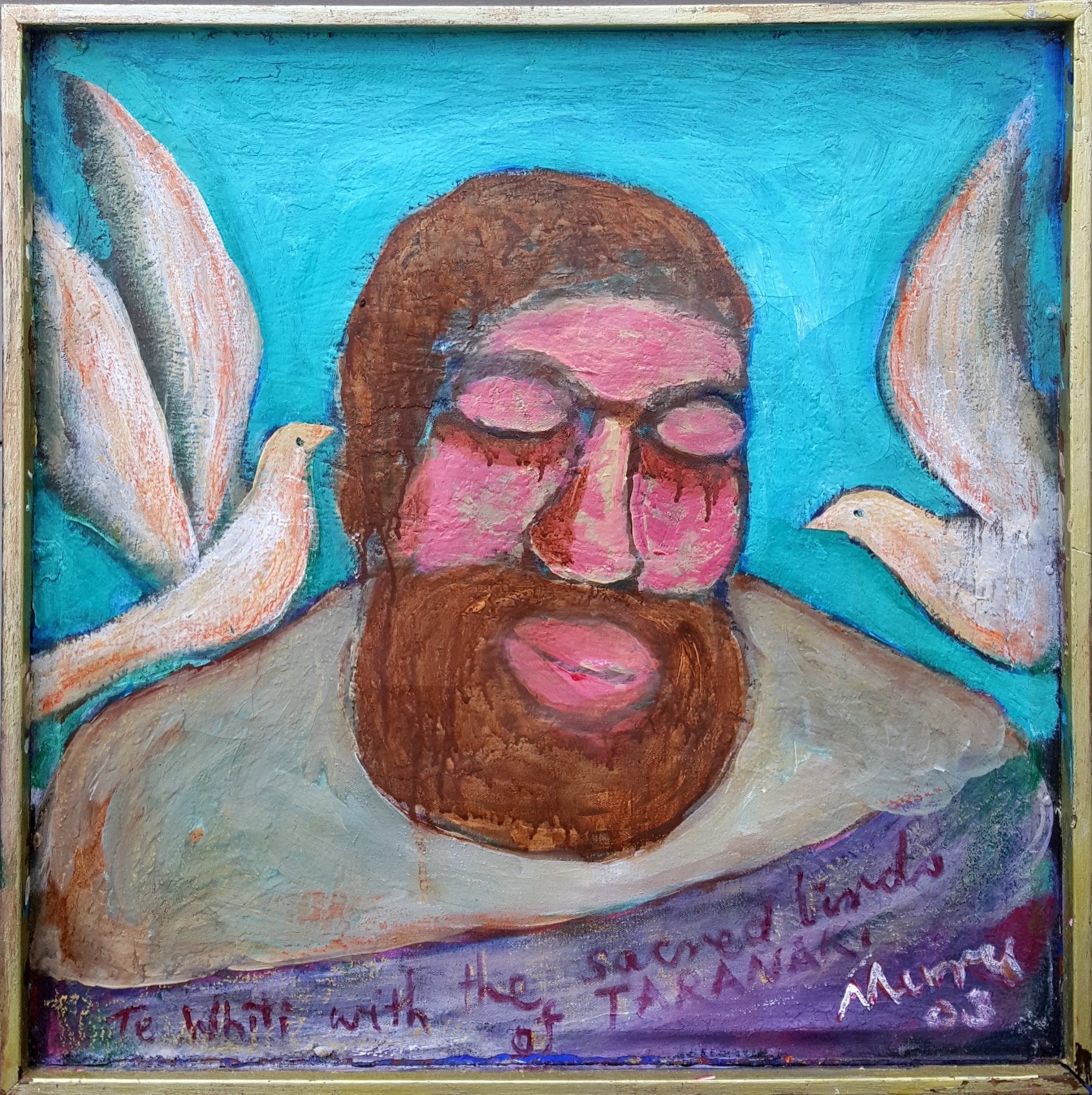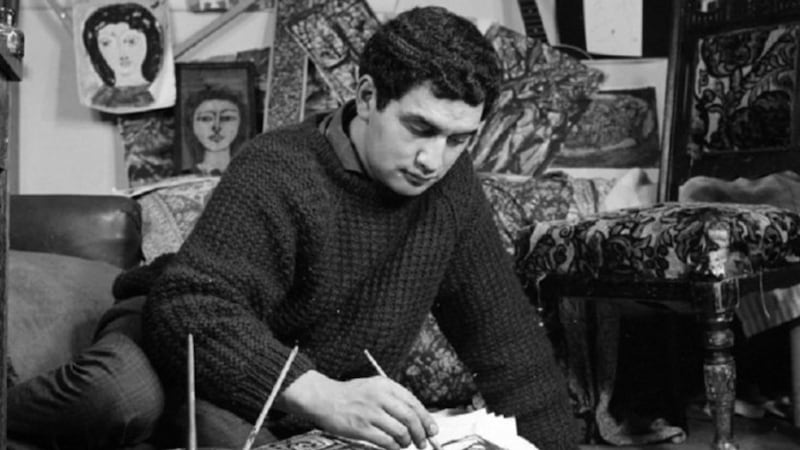Selwyn Muru painting at Barry Crump's house in 1964. Photo/supplied
One of the most senior Māori artists is the subject of a new exhibition at New Zealand Portrait Gallery, Te Pūkenga Whakaata.
Selwyn Muru: A Life's Work weaves together a biographical portrait of the life's work of Selwyn Muru, also known as Herewini Murupaenga. It offers an insight into the breadth of his achievements through a focus on his art, and seeks to raise public awareness of his mahi, especially with younger generations who may not be aware of his contributions.
Now 85, Muru (Ngāti Kurī, Te Aupōuri, Te Pātū, Ngāti Rēhia, Muri Kahara, Te Whakatōhea) is considered a leader of the Māori cultural renaissance that began in the 1960s. He is also an accomplished writer, broadcaster, teacher, actor, storyteller, musician, fisherman, gardener, and repository of tribal knowledge. He is recognised as one of the most original Māori thinkers and the finest Māori orators of his generation.
Until now he has never had a major retrospective or monograph dedicated to his artworks. Alongside the exhibition, an edited book is to be published with Oratia Media in 2023, offering a more extended representation and discussion of his work, aiming to address this void.
Included in this exhibition, curated by Moana Nepia, are paintings that honour Muru’s whakapapa links to Ngāti Kurī from the far north, and to Ngāti Rēhia and descendants of the Mataatua Waka. Other paintings, honour tribal relatives, close friends, and mentors such as Whina Cooper, Matiu Rata and Colin McCahon.
Among the portraits in this exhibition, are painted self-portraits, photographic portraits of him in different contexts by Ans Westra, John Miller, Adrienne Martyn, and Geoff Mason, and images of him from family albums that depict him speaking on public occasions, or with some of the taonga he made and gifted to others. Featured too are painted portraits of his first art teacher Kāterina Mataira, his relation, the poet Hone Tuwhare, and photographer Ans Westra.

Te Whiti with the sacred birds of Taranaki
by Selwyn Muru. Photo/supplied
Jaenine Parkinson, Director of NZ Portrait Gallery Te Pūkenga Whakaata says the exhibition paints a portrait of Muru’s community and times, as well as presenting the issues he strove to bring to the foreground, which have continuing relevance in Aotearoa today.
“In his life’s work Muru paid no regard to the compartmentalisation of media. He excelled at every form of communication. He turned his hand to that that was necessary for expression and connection.
His message focused on communicating Māori perspectives of history, contemporary life, and ongoing injustices. He strove for the protection and advancement of te reo Māori, for the uplifting of mana Māori and the promotion of peace.
While Muru’s work is situated within global artistic conversations about the politics of identity and injustice, his work operates locally by making visible the continuity of Māori intellectual tradition — a tradition that has been shaped by colonisation and urbanisation, but one that also adapts to change and adversity through innovation and resilience.
The exhibition is open at the Portrait Gallery until February 12 2023.


